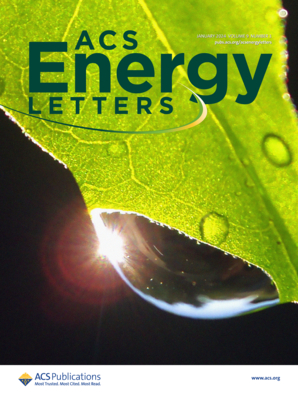Layered Organic Molecular Crystal with One-Dimensional Ion Migration Channel for Durable Magnesium-Based Dual-Ion Batteries
IF 19.3
1区 材料科学
Q1 CHEMISTRY, PHYSICAL
引用次数: 0
Abstract
Mg-based dual-ion batteries (DIBs) represent promising battery technologies for next-generation sustainable energy storage; however, their advancement is strongly hindered by sluggish Mg2+ diffusion and structural instability of anode materials. Herein, fast and reversible storage of Mg2+ in nonaqueous and aqueous electrolyte is shown for a layered organic crystal, 5,7,12,14-pentacenetetrone (PT). The enolization redox chemistry of PT and its weakly stacked layered structure with rich 1D molecular channels promote Mg2+ storage kinetics, providing a high diffusion coefficient on the order of 10–8–10–9 cm2 S–1. As expected, the nonaqueous Mg-DIBs exhibit a reversible capacity of 95 mAh g–1 at 0.1 A g–1, wide-temperature operating capability (−20 to 50 °C), and good cycling stability over 2000 cycles. Interestingly, the applicability of PT as Mg2+-hosting materials extends to aqueous systems, enabling the construction of high-safety aqueous Mg-DIBs. This study provides crucial insights into the structural design of organic molecular crystal for multivalent ion-based DIBs.

求助全文
约1分钟内获得全文
求助全文
来源期刊

ACS Energy Letters
Energy-Renewable Energy, Sustainability and the Environment
CiteScore
31.20
自引率
5.00%
发文量
469
审稿时长
1 months
期刊介绍:
ACS Energy Letters is a monthly journal that publishes papers reporting new scientific advances in energy research. The journal focuses on topics that are of interest to scientists working in the fundamental and applied sciences. Rapid publication is a central criterion for acceptance, and the journal is known for its quick publication times, with an average of 4-6 weeks from submission to web publication in As Soon As Publishable format.
ACS Energy Letters is ranked as the number one journal in the Web of Science Electrochemistry category. It also ranks within the top 10 journals for Physical Chemistry, Energy & Fuels, and Nanoscience & Nanotechnology.
The journal offers several types of articles, including Letters, Energy Express, Perspectives, Reviews, Editorials, Viewpoints and Energy Focus. Additionally, authors have the option to submit videos that summarize or support the information presented in a Perspective or Review article, which can be highlighted on the journal's website. ACS Energy Letters is abstracted and indexed in Chemical Abstracts Service/SciFinder, EBSCO-summon, PubMed, Web of Science, Scopus and Portico.
 求助内容:
求助内容: 应助结果提醒方式:
应助结果提醒方式:


